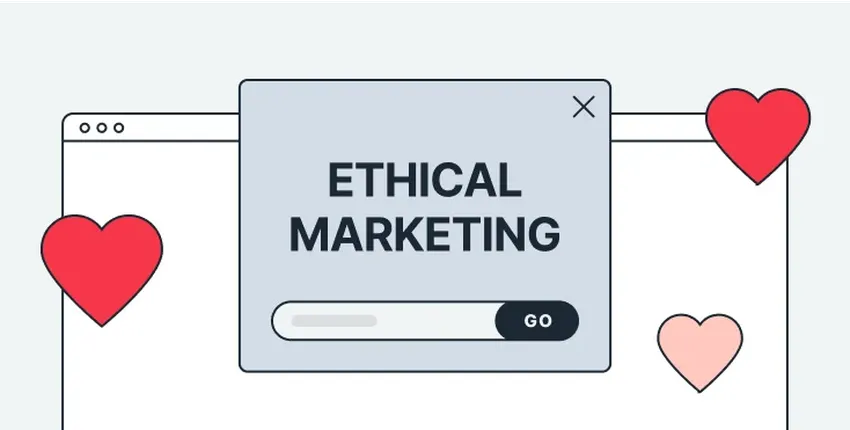
Last updated Tue Apr 22 2025
Education Marketing: Onsite Strategies, Examples & Tips
Education marketing is a comprehensive strategy that includes all the marketing efforts and techniques used to promote an educational institution or business.
In this guide, we'll focus on one critical part of this strategy:
Onsite campaigns.
They are all the campaigns you can launch on your website with popups, bars, banners, forms, chat, landing pages, dynamic content, quizzes, and so on.
Since the website of your educational institution or business is a place where you have control over the visitors’ experience, it's crucial to use this space to its full potential. That includes getting signups for online meetings and campus events, collecting more donations, and otherwise increasing student conversions.
Get started:
Convert more prospective students
From promoting events and grants to improving application completion rates and donations, engage prospective students with personalized, contextual campaigns.
What is education marketing?
Education marketing is the strategic process through which educational institutions and businesses analyze, plan, and communicate their mission, values, and services to prospective students, parents, and the wider community.
Historically, marketing of educational services has been more responsive than strategic, which called for adopting techniques from traditional marketing. The traditional perspective forced schools to do marketing research, analyze the demand in their communities, create marketing plans, and continuously evaluate their effectiveness. That's how the modern educational marketing was born.
The most common marketing channels used by educational institutions are websites (onsite), paid advertising, social media, email marketing, fairs, and on-campus events. Having a well-defined marketing strategy with most of these channels has become critical for the survival of educational institutions in the competitive environment.
How onsite campaigns support effective educational marketing
As education marketing continues to evolve, onsite marketing should be a major part of the bigger marketing plan that educational institutions should adopt.
Onsite marketing is focused on converting website visitors based on their browsing behavior and engagement data. Since the website is where you have the most control, focusing on engaging visitors is one of the best options for growing.
Marketing research in the educational industry supports the critical role of the website.
A recent Ruffalo Noel Levitz study, for example, found that over 90% of prospective students go to institution websites to learn more but only 13% find them useful.
That’s a missed opportunity.
The results of that study also support the importance of effective onsite marketing, as many prospective students are open to engaging with the website (signing up to receive a newsletter, finding info about current students or upcoming campus events, or scheduling visits through forms).
Onsite marketing techniques are the best way to solve these problems and engage more students while they’re browsing the website.
Here’s why:
This strategy includes four major areas: onsite campaigns (interactive tools, popups, surveys, bars), content (downloadable guides, blog articles, videos), admissions marketing (lead capture forms, program and course pages), and branding (mission, values, and visual identity).
Treating these areas as one holistic strategy will help you create a cohesive marketing plan that targets prospective students at every stage of their decision-making process.
Learn more:
Education marketing strategies
These strategies and campaigns will help address the website visitor engagement problems found by the Ruffalo Noel Levitz study. Most of them are created by the users of our onsite engagement platform, so we will also share step-by-step instructions on how to replicate them.
Connect students with program directors
Add dedicated contact forms to course pages for direct communication with course directors, ensuring multiple contact options, including phone calls.
About 40% of high school students prefer to complete a form on a website to get more information, including about courses and degrees. About 18% of them are also open to getting information via a phone call.
But having just a few forms spread out across the website may not be enough. Personalization is critical, as it shows that the students will get in touch with the right person right away.
Here’s an example of this educational marketing technique in action—
Melbourne-based Victoria University has a dedicated Courses page where students browse all the study areas and courses. When they visit a page of a specific course, a small message pops up in the lower right corner, offering to book a phone consultation with the course director.
The message is great, too, as it promises tailored career and course advice:
Want to try this campaign on your website?
Step-by-step instructions on how to replicate this campaign and add to your university website for free:
Give more visibility to marketing videos
Have more prospective students watch videos about your current students and campus life with non-intrusive video campaigns on your website.
Over 80% of high school students say that videos, especially those showing the experiences of current students, are highly useful in their research of universities.
That’s why giving more visibility to videos of campus, students, events, and classrooms is critical to converting more potential students.
But quite often, the layout, content, and other campaigns on the homepage or other popular pages limit the space for videos.
One way in which you can have more potential students watch your videos is tab campaigns.
There are two components: a small preview (the tab), usually added to the lower corner of the page, and the main window with the video that launches when someone clicks the preview.
I created such a campaign for the University of Buffalo using Wisepops and a promotional video they had on YouTube. To encourage engagement, I added the phrase “Picture yourself here” as an inspiring call-to-action:
Using the preview feature in Wisepops, we can see how this campaign would look on their website.
I added it to the homepage’s lower right corner:
Learn how to promote your university videos more effectively with campaigns with previews:
Help choose programs with a quiz
Increase engagement with program quizzes by offering them on pages with programs, courses, and majors.
Quizzes are becoming increasingly popular on the websites of educational institutions and companies thanks to their appealing interactive features. They have many potential use cases, including program fit assessment, career path choice, and lead generation.
University of Arizona, for example, used Wisepops to create this campaign below that offered website visitors to take a quiz and discover matches based on their interests and skills:
If added to the pages with programs and courses, this campaign can be relevant and helpful for those looking to determine which majors align with their goals.
To do so, use your marketing tool’s page targeting settings (in other words, settings that let you choose the pages where you want the campaign to appear).
Setting them up is as easy as adding the URLs and clicking Apply:
Promote campus events with different onsite formats
Use different channels, including sticky bars and popups, to make sure that your campus event promotions stay as visible as possible on your website.
One of the main reasons students reach out through a website is to schedule a campus visit, whether to learn more about the institution or attend an event.
It's crucial to make sure students and parents can easily find info about campus events and sign up. But as the top five frustrating experiences show, the main issues come down to challenges with finding information that helps evaluate a school—which often includes campus events and tours.
Increase the visibility of your events by having dedicated campaigns running on your website.
Victoria University used a persistent banner to maximize visibility, ensuring the message remained prominently displayed at the top of the website at all times:
Here’s a closer look:
Another format to consider is popups.
They, too, give a lot of visibility to events. You can run a homepage campaign for a couple of weeks before the event and analyze the engagement to inform your future announcements.
Swansea University, for example, promoted an Undergraduate Open Day with this popup message and a link to the registration form:
Or—
You should also consider promoting tours to colleges at your university with dedicated campaigns. For example, if you visit the University of New Hampshire’s College of Life Sciences and Agriculture, you’ll see a message offering to sign up for a tour to see that college:
Tip:
Mix and rotate channels (embedded forms, popups, bars, chat, etc.) to see what drives the best performance. Check engagement analytics in your marketing software to know how many event signups each campaign produced.
Make it easier to chat with student ambassadors
Give prospective students a personal, authentic view of campus life by adding student ambassador contact messages.
Connecting with current students can be a valuable resource for prospective students during their decision-making process.
By having an option to connect with student ambassadors on your institution’s website, students can get a more personalized and authentic perspective on campus life.
St. John’s University, for example, has a dedicated Ask a student or staff page with a list of ambassadors available for questions:
To ensure that more visitors find this page, they added simple banners, inviting to get in touch with student ambassadors:
Creating a similar campaign takes a few steps:
Creating a banner design, adding a button with a link to the ambassadors page, and integrating the campaign with the website.
I used Wisepops popup builder to create a similar campaign. If I were to add it to my institution’s website, I’d target specific program pages, as visitors to those sections are likely seeking more information and already show some interest.
Build email list with multiple onsite channels
Use multiple channels like popups for new visitors and non-intrusive bars for returning ones, set frequency limits, and personalize messages based on visitor groups.
Most institutions rely on a limited range of channels to collect students’ emails, often falling short of their objectives as a result.
Those channels are signup forms and, sometimes, popups. Besides, they are often used incorrectly; For instance, a website might repeatedly blast you with the same “Sign up for our newsletter!” popup every time you load a page, even after you've already signed up.
To improve your email capture:
Combine multiple channels, say, popups for new visitors and non-intrusive bars for returning visitors, to ensure a positive browsing experience
Make sure that a visitor sees your email capture campaign only once a visit (with frequency options in popup and form apps)
Welcome different visitor groups (paid, organic, email, returning, etc.) with more personalized messages thanks to audience targeting settings
Tip:
Create dedicated email capture campaigns for paid visitors.
Since 63% of students click on paid ads from educational institutions, you need to ensure you capture their information and engage with them via email later. This can be done by setting up dedicated email capture campaigns that target paid visitors.
Optimize your campaigns for mobile
Ensure your forms and campaigns are mobile-friendly and optimized for both desktop and mobile, as students and parents often switch devices during their research of institutions.
Make sure your campaigns work well on both mobile and desktop. Students and parents will probably switch between their phones and computers while searching, so it’s important to test on both.
Creating mobile-friendly campaigns, for example, popups, doesn’t require any previous experience. Most good popup tools automatically convert your campaigns or give you pre-made mobile templates to customize.
Northumbria University gives us a great example of the difference between a mobile and desktop campaign.
The campaigns below are displayed only on pages related to applying, so they’re relevant. They’re asking if the visitor is interested in getting some useful materials about the institution before they go.
Here's the desktop version...
And this one is displayed only on mobile (notice the difference in the format):
Related:
Collect feedback on the admissions process
Get useful feedback from visitors to your admissions page by adding a form that stays available at all times without interrupting the experience.
Gathering feedback on the admissions process is crucial for identifying areas of improvement and creating a better experience for prospective students. By understanding their pain points, you can address issues such as unclear application instructions and missing questions.
Arizona State University (ASU) added a feedback form to its admissions page, but it doesn’t display when you land on the page. Instead, it sits as a small “tab” in the lower left corner with “Provide Feedback” written on it, so you know what it’s for:
When a visitor clicks the tab, the feedback form pops up, asking them to rate their experience applying to ASU and share a comment.
This campaign helps collect useful feedback from visitors about what might be missing in the application process and how to improve the content for better engagement:
See how to replicate this campaign from ASU:
Reduce the number of incomplete applications
Reduce application form abandonment by using exit popups or custom event triggers, like reminder campaigns.
Application form abandonment is a big challenge. Luckily, there are some effective ways to tackle this issue. For instance, you can set up an exit campaign that pops up when someone tries to leave the application form page without finishing.
The National University took it a step further by using a custom event (an incomplete application form) to trigger this simple, non-intrusive campaign. If a visitor leaves the form and starts browsing other pages, they’ll get this reminder to come back:
Note:
This campaign uses a custom trigger event, which could be any action visitors take on your website. Using this targeting makes your campaigns more relevant.
Boost scholarship awareness with campaigns with homepage campaigns to collect more potential students to nurture with emails.
Got any scholarships or grants to offer? If so, think about promoting them with a popup campaign. This format is the most effective way to make sure all your visitors see this information.
This campaign example from National University collects three key details: first name, last name, and email. With this info, you can easily personalize future email campaigns for these visitors:
Engage more students with your blog
Take advantage of different onsite channels to engage more visitors with your institution’s news, updates, and blogs.
If your institution’s website has news, posts, announcements, updates, or other blogs to share, consider sharing them with sticky bars.
Since bars appear on the top or bottom of the website, they give you a great chance that most visitors will notice it. Besides, they are non-intrusive while staying available.
Northeastern University, for example, gives us an example of this educational marketing tip in action. Their website shares the latest news post about how the new administration in Washington might affect the university’s community and policies:
This simple campaign is very easy to replicate with email capture tools and other marketing software.
I was able to create this in Wisepops in about five minutes:
Tip:
Create a dedicated email capture campaign for your blog. Thanks to page targeting settings, this campaign would appear only on blog pages to avoid interfering with other campaigns you may be running.
Summary
With these educational marketing strategies in place, institutions and companies can create a more engaging website experience and effectively showcase what makes them unique to prospective students.
If you’d like to keep reading:

Oleksii Kovalenko
Oleksii Kovalenko is a digital marketing expert and a writer with a degree in international marketing. He has seven years of experience helping ecommerce store owners promote their businesses by writing detailed, in-depth guides.
Education:
Master's in International Marketing, Academy of Municipal Administration
Related articles

5/20/2025
What is ethical marketing? See ethical marketing examples of great companies advertising their products in a conscious way.

6/12/2025
One-stop guide: find out what flash sale is, get flash sales ideas and examples. See how to do a successful flash sale for your business.
